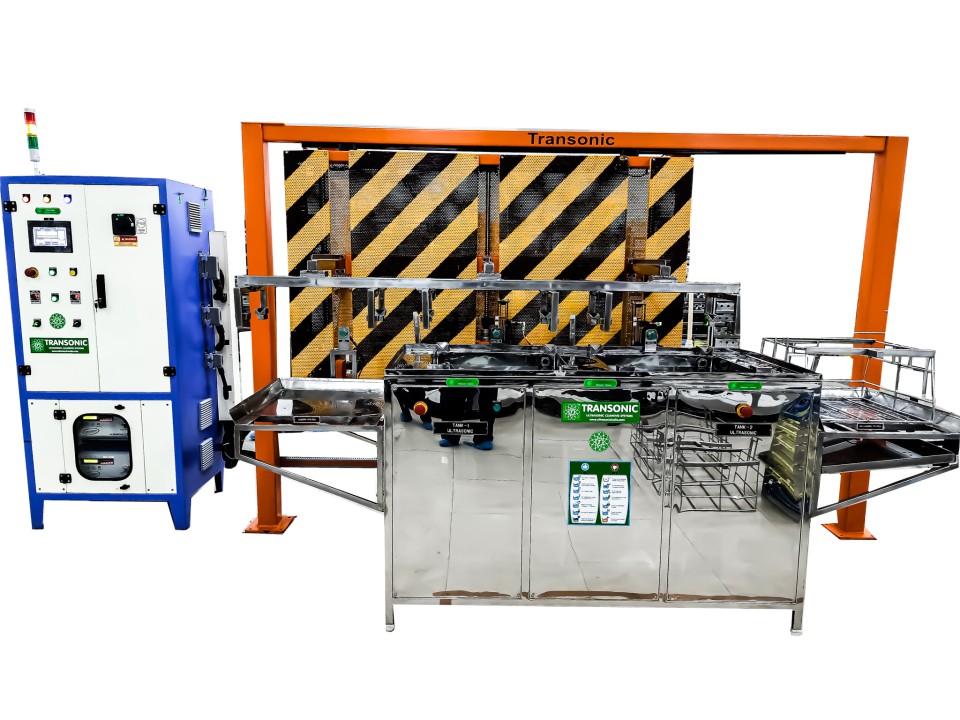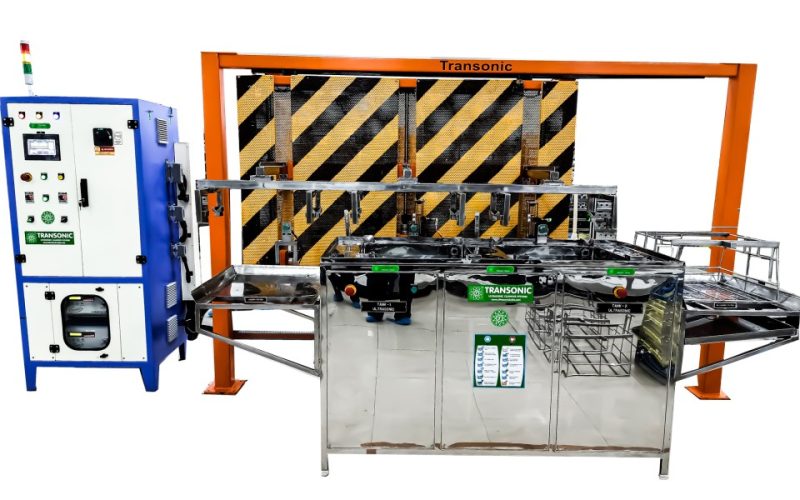
There is no secret that Mould & Die maintenance has been a pain in the neck for many industries globally. While the traditional methods involve using manual scrubbing, OTC degreasing sprays, Handy Jet Washing systems, Sand Blasting, Solvent dips to name a few, all the prior mentioned methods have their own set of cons.
Over the past decade, Ultrasonic Cleaning technology has created it’s own space in this segment by overcoming some of the most common issues involved in Mould & Die maintenance. Ultrasonic cleaning is a green, safe, user friendly, fast, economical and fatigue resistant method for mould & die maintenance.
The usual consumable being electricity, water and cleaning solvent, the usage of Ultrasonic cleaner is easy to understand and thus an unskilled professional could be easily trained as well. Unlike abrasive methods like Sand Blasting, the Ultrasonic cleaning machine is a much gentler method that uses high potency cavitation bubbles to extract dirt, dust, grime, rust and other contaminants from the components. Ultrasonic cleaning is a batch type cleaning process that requires the component to be in contact with the cleaning solution in a dipped position for a specified time that usually depends upon the level of contamination and output required. For high capacity outputs, a mutistage or a multi-tank Ultrasonic cleaning machine can be used with automation of basket transmission that usually follows process(s) of High Power Ultrasonic cleaning followed by Rinsing and finally drying of the component.
Cleaning Chemical solution: There also are several environmentally safe detergents being used that do a fair job of removing most contaminants left from resins in use today. Combined with a minimal amount of hand scrubbing on heavily contaminated areas, these user-friendly solutions are gaining popularity with companies simply because of their ease of disposal, less mess, and safer working conditions.
Ultrasonic power and frequency: Cleaning heavy mold plates and tooling requires use of heavy-duty equipment and not your typical ultrasonic jewelry cleaner. The amount of power (wattage) needed depends on the tank size and the type of load to be cleaned. We choose various frequencies depending upon the intricay of the mould and type of contamination that needs to be disloged.
Buying considerations
In the real world, mold plates will get slammed into the sides of the wash tank and baskets full of tooling will be dropped in too fast. Exposed knobs will be ripped off. The tank will run 24/7 because everyone will suddenly have something that needs to be ultrasonically cleaned, as will be evident by the grass clippings and paint residue floating on the surface of the wash tank. And, due to the nature of ultrasonic operations—high heat and constant vibration, the system’s parts can shake loose, wear through, and burn out. Heavy duty, bullet- proof, robust, and solid are the words to keep in mind when shopping for an ultrasonic cleaning system that will perform reliably in a busy mold-repair shop. Unless absolutely necessary, stay away from bells and whistles such as automatic loaders, conveyors, dryers, and fancy cabinetry.
However do make sure that you get the following inputs from your Ultrasonic manufacturer:
1) Durable life of Ultrasonic transducers
2) Warranted leakproof tank for atleast 12 Months
3) Ease of access to filter, pumps, plumbing for maintenance purpose
Using an ultrasonic cleaner for mold cleaning offers several advantages:
1. Efficiency: Ultrasonic cleaners use high-frequency sound waves to create microscopic bubbles in the cleaning solution. These bubbles implode upon contact with the surface, effectively removing dirt, grime, and mold from intricate and hard-to-reach areas.
2. Thoroughness: The agitation caused by the implosion of bubbles reaches into tiny crevices and pores that might be missed by manual cleaning methods. This ensures a more thorough removal of mold and prevents its regrowth.
3. Non-destructive: Ultrasonic cleaning is generally non-destructive to the item being cleaned, as it doesn’t involve abrasive scrubbing or harsh chemicals. This makes it suitable for delicate items or materials that could be damaged by traditional cleaning methods.
4. Time-saving: Ultrasonic cleaners can clean multiple items simultaneously, reducing the time and effort required for cleaning large batches of mold-infested items.
5. Environmentally friendly: Unlike some chemical cleaners, ultrasonic cleaning typically utilizes water-based solutions or mild detergents, making it a more environmentally friendly option.
6. Versatility: Ultrasonic cleaners can be used to clean a wide range of materials and items, including jewelry, electronics, automotive parts, medical instruments, and more. This versatility makes them valuable tools for various industries and applications.
7. Reduced labor costs: With their automated cleaning process, ultrasonic cleaners can reduce the need for manual labor in cleaning tasks, thereby saving on labor costs and improving efficiency in commercial settings.
Overall, the use of an ultrasonic cleaner for mold cleaning offers a combination of effectiveness, efficiency, and versatility that makes it a preferred choice for many cleaning applications.


